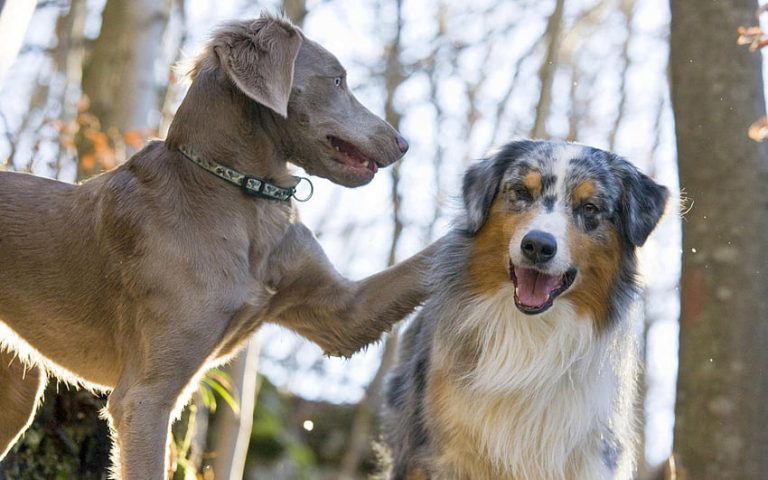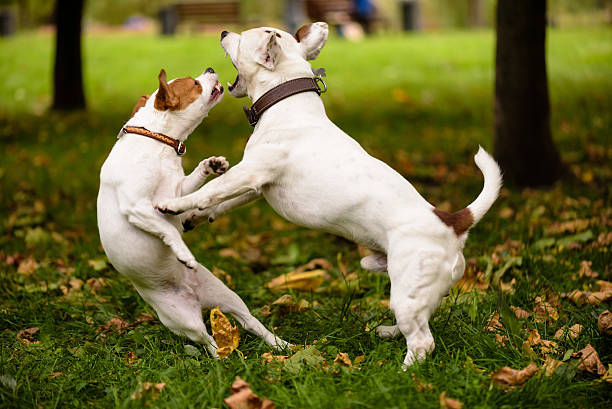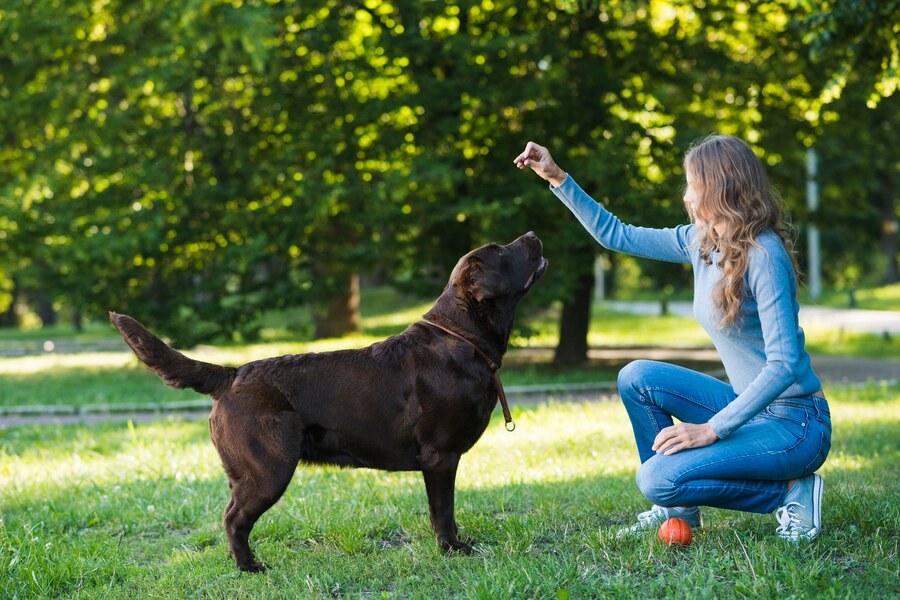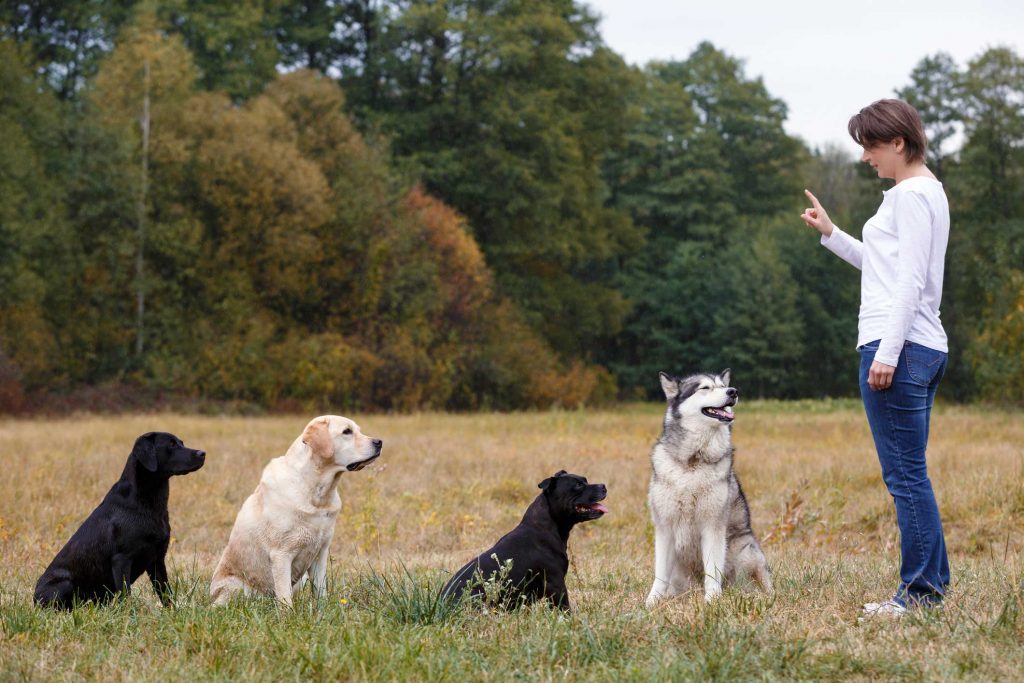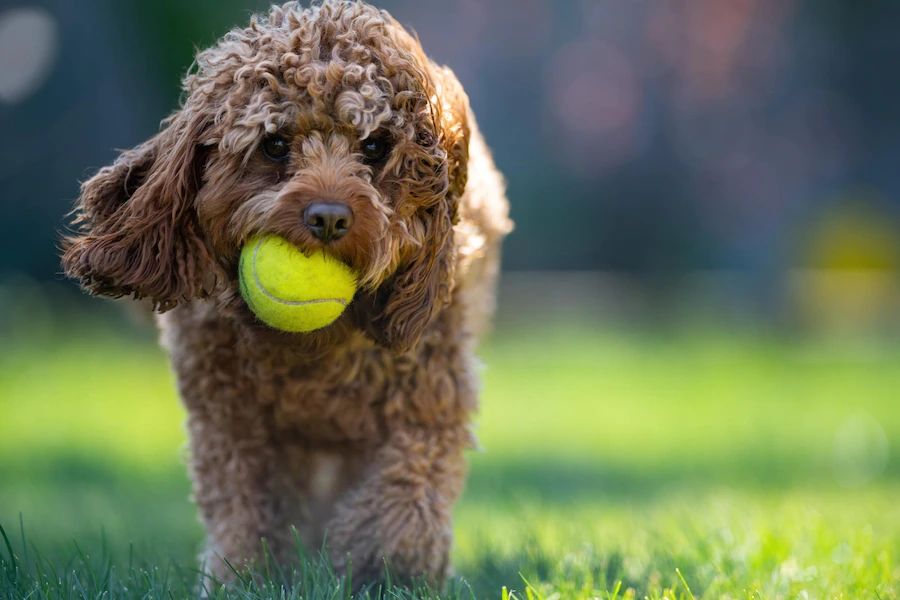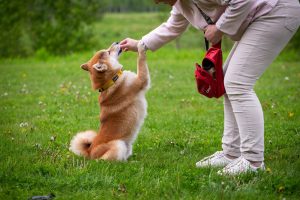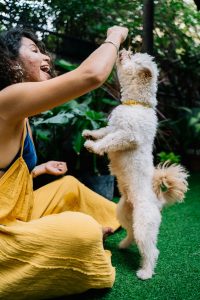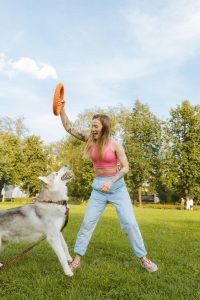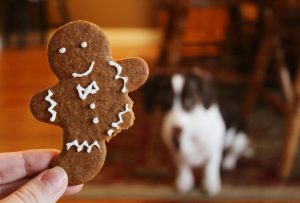Do you have a reactive dog? Or a fearful dog? Or maybe your dog is showing aggressive behavior toward other dogs? If that is the case, there are two things you can do. One is to teach your dog to ignore other dogs and be calm around them. And the second is to socialize your dog to make these encounters more manageable. Today, we will talk about how to train your dog to ignore other dogs.
Every dog owner wants their dog to be friendly and sociable. But it is not always that easy. Not all dogs are the dog park kings. What is a dog park king? It is a dog that goes into the dog park and plays with everyone. To be honest, I thought Milo was such a dog when he was young. But that is the case with puppies.
As your dog grows, he develops a character, and he is not friendly with everyone. Hey, at the end of the day, do you want to talk to all your colleagues? Or everyone you meet? The trick is to teach your dog to ignore dogs he doesn’t love and then act politely with dogs he can stand.
This type of dog training is essential. Otherwise, it might be frustrating, and even dangerous when you walk your canine friend. You will have to handle a reactive dog and one that constantly pulls on the lead.
Why Do Dogs Behave Inappropriately?
There are many reasons why your dog might lose control and act anxious around other dogs. And in order to train your dog to ignore distractions like other animals, you must understand why your furry friend loses control and becomes agitated.
For that, we need to understand the concept of reactivity.
I have to stress this first. There is a BIG difference between a reactive dog and an aggressive dog. Do not make the mistake of thinking your reactive dog is being aggressive.
Reactivity is the result of emotional mismanagement and can appear at any point. Sometimes, reactivity appears as a reaction to positive feelings such as joy. And your dog will disobey commands during reactivity, no matter whether it is positive or negative emotions. With that in mind, here are some reasons why your dog might go crazy around other dogs:
- Fear is a common negative and intense emotion that can generate phobias and reactivity problems. Sometimes, your dog might have experienced trauma in its puppyhood in presence of other dogs, so it now becomes scared. And its initial reaction is to be reactive
- Anxiety is another common problem, it happens when a dog doesn’t have control over a situation. This can cause stress and anxiety, and dogs respond reactively to stimuli that generate anxiety. Often, it happens in dogs that have not been properly socialized with other dogs. Anxiety also appears in dogs that have been educated through punishment, not positive reinforcement
- Hypersociability, yes, sometimes, your dog might be reactive because it cannot manage the joy it feels when meeting another dog on the street. Your dog might be barking or pulling on the leash, pulling just to say hello to another dog. This is why I advocate teaching a proper way to say hello
- Small dogs are often reactive because of the simple rule in nature. Bigger animals eat smaller animals. So, smaller dogs often feel endangered by bigger dogs when they are not properly socialized. Things get out of hand usually when the large dog is over their head
What Do You Need For Proper Training?
Now let’s talk about how to train your dog to ignore other dogs. Before we talk about the ways you can teach your puppy, let’s talk about what you will need for this training session.
First and foremost, a leash, but not a retractable leash. Usually, a loose leash works when your dog gets the handle of it. In the beginning, use a shorter leash. Then, plenty of treats, and add in some high-value dog treats for when your dog shows good behavior around other dogs.
And of course, time, patience, and effort. You have to put in the effort, be patient, and spend a lot of time practicing. You need to practice during walks and be patient when your dog doesn’t show proper behavior. Try not to become aggravated or impatient. Your canine friend will sense your anxiety and nervousness and will act accordingly.
Where And When To Begin?
The big mistake owners make with an anxious dog is they throw it right into the fire. The logic is that your dog will handle the situation.
But never throw your dog into a high-energy situation and expect it to excel. This is why I have talked about the dog park myth. It is not the best place to socialize dogs, especially fearful and anxious dogs.
Instead, you want to begin your training away from other dogs. Every training method we will mention requires you to have your dog’s attention.
To do that, you have to begin in a zero-distraction area. Establish a bond with your puppy, and then add small distractions and other dogs into the mix.
How To Redirect Attention?
One of the simplest ways how to train your dog to ignore other dogs is to redirect its attention. Get a bag of high-value dog treats and begin at home. Here is how to do it.
- Start by giving your dog a treat when it responds to its name. Use positive reinforcement to teach your dog to turn and look at you
- Start at home and reward your dog every time when it responds to its name. Do not say it every 5 seconds. Wait for a couple of minutes, say your dog’s name, and reward it when it responds
- Practice inside for a couple of days and then start using the training method during your walks. Do it randomly, so that your puppy doesn’t anticipate it
- Never punish your dog if it gets distracted. Say its name again and give it a treat so that it understands the association
- Slowly add more distractions and start combining your dog’s name with a command like come, sit, or anything similar
- After a while, you should start adding longer sequences, so that your dog reacts to its name, but doesn’t instantly go back to the distraction. The goal is to get your dog’s attention and then keep it for a minute or two. You can also do it by increasing the time between calling your dog by its name and giving the treat
The Friend Method
At its core, this method is desensitization. The idea is that dogs react to the stimuli more excitingly the first moment they see it, and then they gradually reduce their excitement.
So, for this training session, you will have to call up a few friends with their dogs.
- Have your friends bring their dogs for some good-old-fashioned dog training
- Find a large area and have your puppy on a leash. Stand with your puppy
- Line up your friends, but separated by 20 to 30 feet apart with their dog on a leash
- Have your friends walk their dogs past you and your puppy one by one
- If your pet lunges towards the other dog, just tell him, no, and then have him sit. When your puppy sits, reward with a good boy and a treat
- Keep the line going in a circle for 5 to 10 minutes. Repeat two or three times per week
- Once your dog masters the conga line with your friends, try it on walks in public
Teach Your Dog To Carry A Ball
This is the method I use to have Milo focused on something else than on other dogs. Milo is semi-reactive. If dogs do not come to him, he will not go to them. But sometimes, when larger dogs try to dominate him, he reacts. So, I try to redirect his attention to something he loves more than anything in the world, and that is a ball.
Before you can try this, you have to teach your dog to pick up and hold objects. You do that by presenting an object, letting your dog sniff it, reward. Then add pick up, present an object again, and when your dog touches or picks up the object, reward, and praise with a good boy. Add the hold command gradually.
Now let’s talk about how you can teach your dog to carry a ball, a stick, or any other object during walks. It will help you with reactivity since your dog will be focused on the object he carries. It is a self-rewarding method. Your dog has a job to do and is happy to do it. And the more he carries the object, he sees it as a reward. The punishment here is you take away the object.
- Find a toy your dog loves or an object. Some dogs carry a stick, others a toy, and some even carry rocks
- Go for a walk and show your dog its favorite toy. Get him excited about the toy, and then give him to pick up and hold
- Continue walking as your dog is carrying the ball. If your dog drops the ball, pick it up, take it away, or stop the walk
- The most rewarding thing for most dogs is to go on a walk. And the worst punishment is to stop the walk
- You either stop the walk completely or hide the toy in your pocket and continue walking. Your dog will be eager to get the ball again
- Walk for a minute or two and then give the ball again. Pick it up if your dog leaves it
- Practice it constantly, and after a while, you will have a dog that will be able to carry a ball for like 20 to 30 minutes without any problems
- Do not give the ball/toy/stick back if your dog is whining, barking, or jumping. Always reward for good behavior. That means have your dog sit, and then give the ball
Final Thoughts
Let’s finish with a few final thoughts about how to train your dog to ignore other dogs.
- Practice in every environment, start where there are no distractions, and then move to places with lots of people, areas with lots of other dogs, and other animals
- Use a long leash during your training. A short leash will cause constant tension. A long and loose leash will give your dog freedom of movement, but also you want your dog to make the right decision and come to you
- Reduce exposure to the stimuli when you begin training, and then gradually add exposure
- Increase the distance between your dog and other animals when you train your dog to ignore them. Get your dog’s attention from a far away, and try to keep it on you
- Associate the presence of other dogs with positive stimuli

